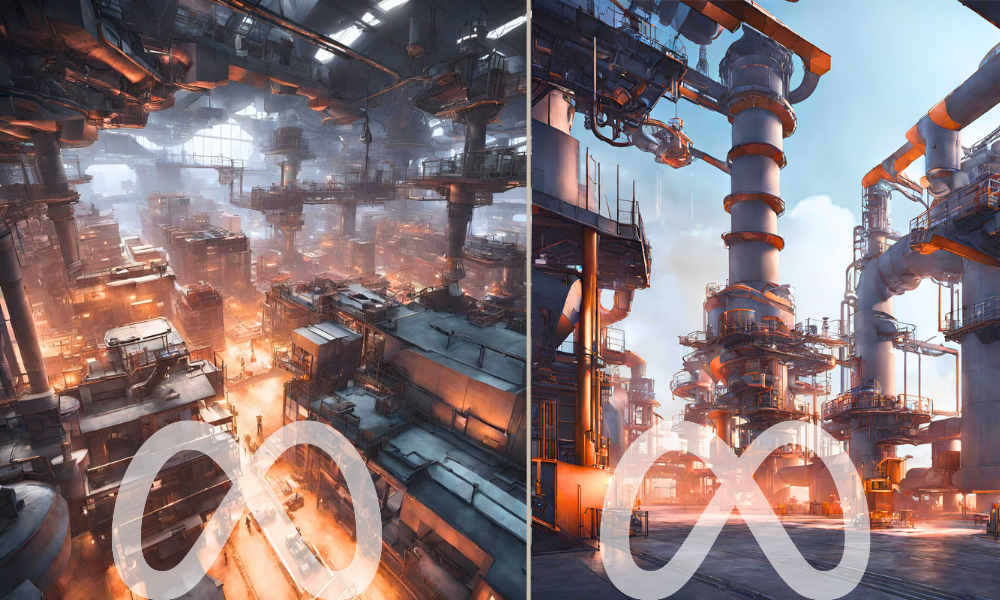It’s a transformative catalyst for innovation, redefining how people and machines collaborate to design, build, operate, and optimize physical systems using immersive technologies in the cloud. This includes process optimizations, modeling, digital analysis, and AI-based predictions to improve sustainability and efficiency.
Companies are using the industrial metaverse to transform their operations with digital twins and virtual collaboration, adding predictability and resiliency to the supply chain. For example, Coca-Cola Hellenic Bottling Company and Mercedes-Benz are leveraging these technologies to empower their factory employees and drive process innovation through data insights.
The industrial metaverse is evolving and capturing the scope of every industry, including manufacturing, healthcare, retail, energy, and sustainability, enhancing visibility, flexibility, contingency planning, and risk management. It’s a game-changer for operational technology, with digital twins being one of its key applications.
Reducing Carbon Emissions
The industrial metaverse can help in reducing carbon emissions in several ways, as following:
Remote Operations: By enabling remote monitoring and repair of facilities, the industrial metaverse reduces the need for emissions-intensive travel.
Efficiency in Manufacturing: It helps manufacturers prevent machine downtime, which cuts the emissions associated with building and operating backup machines¹.
Optimized Logistics: Transport companies can use the metaverse to model their networks more efficiently, keeping unnecessary trucks and planes from operating, thus reducing emissions¹.
System Modeling: Companies can map out their industrial systems in the metaverse to determine the most efficient ways to operate them, which can lead to significant energy savings and emission reductions¹.
These applications of the industrial metaverse contribute to sustainability by improving operational efficiency and productivity, which are closely linked to reducing environmental impact.
Companies Utilizing Industrial Metaverse
Here are some examples of how the Industrial Metaverse is being utilized:
1. Siemens: The German engineering firm is focusing on transport, infrastructure, and energy verticals within the metaverse. Siemens is leveraging digital twins for development, particularly in these industrial areas.
2. Ford: This leading automaker has been using the metaverse for R&D in vehicle design, safety testing, and manufacturing optimization. Ford employ virtual reality (VR) simulations to create virtual prototypes and conduct tests.
3. Coca-Cola Hellenic Bottling Company: The beverage company is transforming its operations with the industrial metaverse, utilizing digital twins and virtual collaboration to add predictability and resiliency to their supply chain.
These examples illustrate the diverse applications of the Industrial Metaverse across different sectors, enhancing efficiency, innovation, and collaboration.
Key Players
Some of the key players in the industrial metaverse space include:
Siemens AG: A leader in industrial automation and digitalization, Siemens is actively involved in the development of the industrial metaverse.
Microsoft Corporation: Known for its Azure cloud computing platform and mixed reality technologies like HoloLens.
NVIDIA Corporation: The semiconductor giant specializes in AI and graphics processing, contributing to the metaverse with its powerful GPUs and AI platforms.
PTC Inc: Provides software solutions that aid in the creation of digital twins and immersive virtual environments.
Bentley Systems, Inc: Offers comprehensive software solutions for advancing infrastructure, including digital twin technologies.
Dassault Systèmes SE: Known for its 3D design software, 3D digital mock-up, and product lifecycle management (PLM) solutions.
HTC Corporation: Develops virtual reality devices and platforms that can be used within the industrial metaverse.
Magic Leap, Inc: Focuses on proprietary wearable technology that enables users to interact with digital content in the real world.
These companies are at the forefront of integrating digital twin technology, AI, extended reality, and other advanced technologies to create the industrial metaverse.
How A Company Utilised Industrial Metaverse to Improve Its Operations
One example of a company using industrial metaverse technology to enhance their operations is Jakruv Heavy Equipment Inc.. They employed the industrial metaverse to address common challenges in their business. Here’s how Jakruv did it:
Digital Twins: Jakruv created digital twins of their heavy machinery which allowed for real-time monitoring and simulation. This helped in predictive maintenance, reducing downtime and extending the life of their equipment.
Virtual Prototyping: Before building physical prototypes, Jakruv used the metaverse to test designs and functionalities in a virtual environment, saving time and resources.
Remote Collaboration: By leveraging AR and VR, engineers and technicians from different locations could collaborate in the metaverse, leading to improved problem-solving and innovation.
Training and Safety: The company developed virtual training programs for their employees, enhancing their skills in a safe and controlled environment.
These applications of the industrial metaverse enabled Jakruv to streamline their design processes, improve operational efficiency, and reduce costs while also fostering a culture of continuous learning and safety.
The Industrial Metaverse is considered a game-changing technology because it represents a significant evolution in how industries operate and innovate. It merges the physical and digital worlds, enabling businesses to create, test, and manage products and processes in a virtual environment before they are implemented in the real world. This approach can lead to increased efficiency, reduced costs, and improved safety.
The Industrial Metaverse is still emerging, but its potential impacts on business efficiency, innovation, and sustainability make it a technology that could revolutionize various industries.
This news is republished from another source. You can check the original article here

